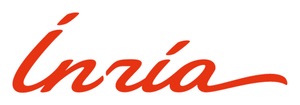I am the coordinator of the funded ANR project GRASP-IT.
This project aims to recover upper limb control improving the kinesthetic motor imagery (KMI) generation of post-stroke patients using a tangible and haptic interface within a gamified Brain-Computer Interface (BCI) training environment. (i) This innovative KMI-based BCI will integrate complementary modalities of interactions such as tangible and haptic interactions in a 3D printable flexible orthosis. We propose to design and test usability (including efficacy towards the stimulation of the motor cortex) and acceptability of this multimodal BCI. (ii) The GRASP-IT project proposes to design and integrate a gamified non-immersive virtual environment to interact with. This multimodal solution should provide a more meaningful, engaging and compelling stroke rehabilitation training program based on KMI production. (iii) In the end, the project will integrate and evaluate neurofeedbacks, within the gamified multimodal BCI in an ambitious clinical evaluation with 75 hemiplegic patients in 3 different rehabilitation centers in France. This 4-years project will take advantages of the leading interdisciplinary consortium combining expertise from 4 research teams (LORIA/Neurosys, UL/Perseus, Inria/Camin, Inria/Hybrid) and 3 centers or hospital department for physical medicine and rehabilitation (IRR/CMPR Lay St Christophe, CHU Rennes, CHU Toulouse). The GRASP-IT project represents a challenge for the industrial 3D printing field. The materials of the 3D printable orthosis, allowing the haptic-tangible interfaces integration, will come from a joint R & D work performed by the companies Alchimies and Open Edge.



